Well-known for its seemingly brutal predatory and feeding habits, the red-backed shrike has become virtually extinct in the UK as a breeding bird – and is rarely seen in private collections either, says BILL NAYLOR. However, we shouldn’t overlook the attractions of this small but formidable passerine.

WITH its grey head, pink chest and black highwayman’s mask, the male red-backed shrike (Lanius collurio) is handsome bird. But like all of the 30 or so species of true shrikes (which get their name from their “shrieking call”) it’s a natural born killer.
Although shrikes are passerines, they are just as much a bird of prey as any raptor species. Insects, lizards, mice, young birds and small adult birds are all on the menu. Bird ringers have found them attacking birds caught in mist nets. Gamekeepers used to shoot them on sight; aware they wouldn’t hesitate to kill pheasant or partridge chicks.
Shrikes prefer open dry country, where in extended hot weather, insects thrive. They are fond of lizards and these are a favourite food on heaths and moorland. These birds also frequent overgrown derelict sites with lots of brambles.
Like all shrikes, the red-back prefers a vantage point, such as telegraph wires or the top of bushes. Here they will wait impatiently, occasionally flicking their tail until a victim comes into view. Then they hover or pounce, striking first with their feet and gripping prey tightly. Their feet lack the power of a raptor’s talons and the hooked beak does the killing.
Most shrikes’ beaks, like those of some raptors, are equipped with a secateurs-type notch for breaking a bird or mammal’s neck – a feature handlers of this species have sometimes discovered to their cost. Carrying prey in its beak, the shrike seeks a thorn bush, such as blackthorn or gorse, and impales it. Barbed wire and even the upturned tines of a discarded garden fork have been utilised to secure dead prey, which can be dissected at leisure. Bees and beetles, its favourite insect, are often impaled on teasel and other plant stalks.
A common ritual
This story is from the February 14, 2018 edition of Cage & Aviary Birds.
Start your 7-day Magzter GOLD free trial to access thousands of curated premium stories, and 9,000+ magazines and newspapers.
Already a subscriber ? Sign In
This story is from the February 14, 2018 edition of Cage & Aviary Birds.
Start your 7-day Magzter GOLD free trial to access thousands of curated premium stories, and 9,000+ magazines and newspapers.
Already a subscriber? Sign In
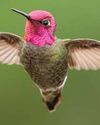
The World's Best-Known Hummingbird?
Intensively studied, the gem-like Anna’s hummingbird is a welcome visitor to the gardens of America’s most populous state: California. Bill Naylor investigates its life history
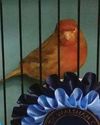
The charm of the English Cinnamon
Despite its long and complicated history, the true Cinnamon canary is still with us – in the hands of a tiny group of breeders. DONALD SKINNER-REID reckons it deserves wider appreciation
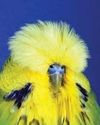
Spangles: a personal overview
FRED WRIGHT relates a budgie story of over-exploitation, consequent problems and abundant potential for the future

New converts to old breeds
Old and rare canaries have a reputation for adding fresh interest and challenge to the hobby. PETE HOOK and NICK JOY agree, and explain the birds’ charm to Dave Brown

Themed aviaries are a hit with the public at annual Stafford show
DECORATIVE AVIARY DISPLAYS from a CBS and an online bird keeping advice group were voted in the top three by visitors for the inaugural Stafford Aviary Competition.
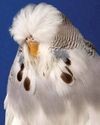
Pieds with potential
More than just a lesser variety, the dominant pied will introduce challenge and change into most studs, reckons CLIVE WAKEMAN. Here he discusses pairings to try and others to avoid

Club News
Welcome to the club and show pages – the bit that’s all about you Results: convention, specialist & rare and Breeder of the Year

Canaries Month by Month:
With Christmas around the corner, BRIAN KEENAN is well into his winter programme, and reckons he might deserve a nice outcross
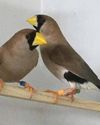
Smart Choice, Docile Nature
Dave Brown welcomes the masked grassfinch to his birdroom and shares advice on this lovely Australian species
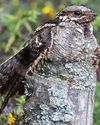
The truth about the ‘flying toad'
Odd local names and weird superstitions can’t hide the beauty and elegance of the nightjar, a species that has made a fascinating subject in a few zoo collections, reveals BILL NAYLOR